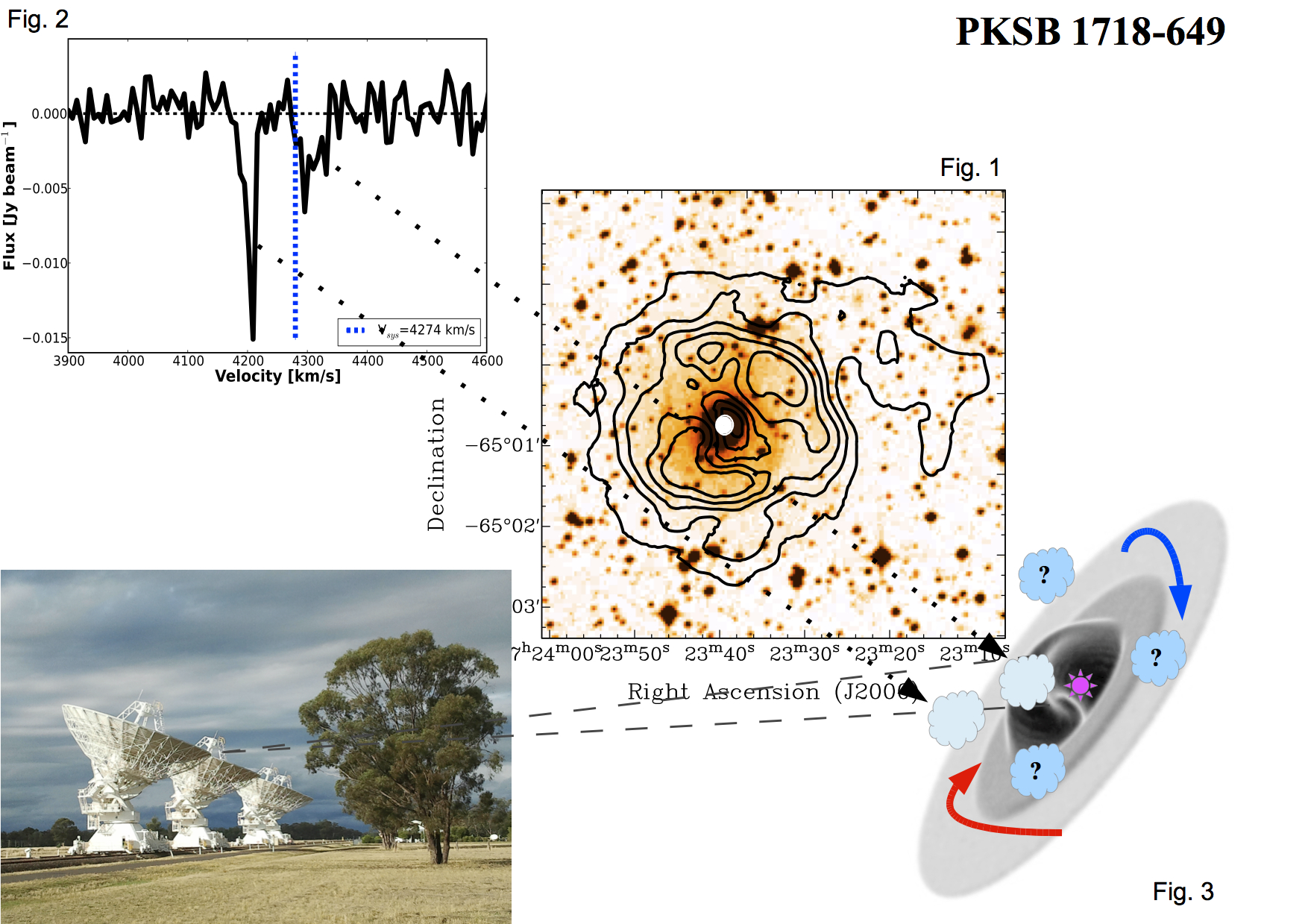Daily Image
10-09-2014What triggers a radio AGN? The intriguing case of PKS B1718-649
| Submitter: | Filippo Maccagni, Raffaella Morganti and Tom Oosterloo |
| Description: | Neutral hydrogen (HI) absorption studies provide great insights in how Active Galactic Nuclei work. Neutral hydrogen has been detected in the inner regions of several radio galaxies, suggesting that the HI gas and the radio plasma may be interacting. Especially compact radio sources, which are likely to be young AGN, appear to be often embedded in an HI-rich medium. The HI appears to be unsettled, suggesting that it may be inflowing or outflowing, and regulating the fueling of the AGN. The detailed analysis of the HI in compact radio sources is necessary to understand the physical mechanisms which may may turn a dormant AGN in a radio loud object. We have done this using observations with the Australia Telescope Compact Array (ATCA) of the young (<100 years) radio galaxy PKS B1718-649. We study the morphology and the kinematics of the neutral hydrogen HI disk (Fig.1; radius about 30 kpc). In particular, we focus on modeling the HI disk and determine the timescale of its formation in relation to the triggering of the nuclear activity. The asymmetries at the edges of the disk can be used to date the last interaction of PKS B1718-649 with a companion to more than 1 Gyr ago. The tilted-ring model of the HI disk shows that this event may have formed the disk as we see it now, but that it is not responsible for triggering the AGN. In absorption, we detect two separate lines (Fig. 2). A link between these clouds and the radio activity is quite possible. The most likely possibility is that the absorption components come from two small clouds that are not part of the regularly rotating disk(Fig. 3). They may belong to a larger population present within the galaxy and which may contribute to fueling the AGN. Simulations of the accretion proces into the AGN, show that cold clouds and filaments may be forming from condensation of the hot halo. These clouds would chaotically collide with the surrounding medium, loosing angular momentum, falling toward the center of the galaxy and triggering the AGN acticity. These results have been presented in an A&A paper, now in press, by F. M. Maccagni, R. Morganti, T.A Oosterloo, E. K Mahony: http://arxiv.org/abs/1409.0566 |
| Copyright: | ASTRON |
| Tweet |  |
